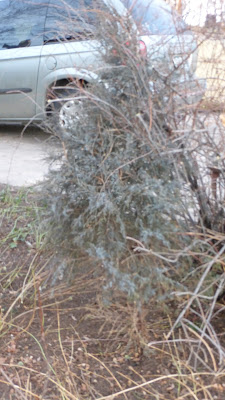I really resent bagged feed.
Buying those convenient pellets is just irritating. But since my friends stopped buying whole grain feed in bulk I have been at a loss for what to do.
Fodder is all over blogs and livestock forums. Basically it is growing grass from purchased grains. I read about it here and here and here.
But the local feed store didn't carry grains for sprouting. (rolled oats and cracked barley were not going to work)
I ended up driving 25 minutes to a small feed store up north and buying 3lb bags of wheat and oats to try.
Following the directions from the above websites I soaked a 1/2 cup of seed and ended up with 4 containers growing. I read later that oats take forever to sprout compared to other grains - the wheat took 10 days to reach 6 inches and in that time the oats had barely sprouted.
 |
| Wheat ready to feed the hens this morning |
They will get their regular layer pellets in the afternoon.
 |
| root mat |
3lb wheat seed was $5
1/2 cup of wheat = 3.5 oz = 38¢
3.5oz dry seed = 10.3 oz fodder
Fodder is 3¢ an oz
50 lbs layer pellets is $15
2 cups of pellets = 12.6 oz = 23¢
Pellets are not quite 2¢ an oz
 |
| Wheat on the left, oats on the right. |

Since the fodder does not need light for awhile, I cover the bins with tomato and cabbage starts.

